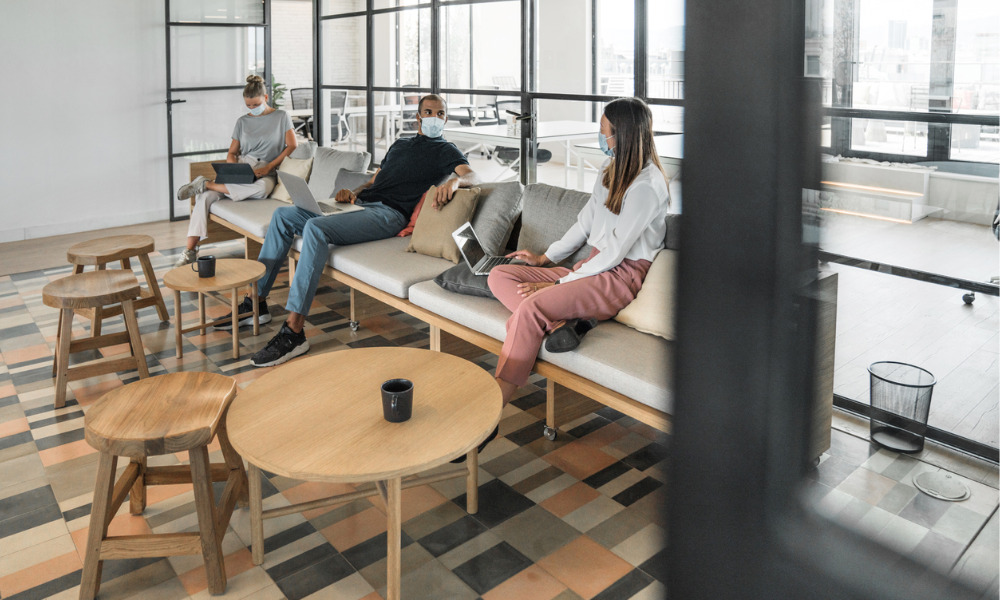‘Workers want to feel safe and they want to be reassured that things like infection control, that the employer has those top of mind’

Employees who have felt protected by personal protective equipment (PPE) and infection control procedures while on the job have more positive mental health outcomes versus those who didn’t, according to a new report.
Reported symptoms of anxiety and depression are highest among those workers who believe none of the required protections are in place, according to the study, based on two surveys sent out by both the Institute for Work and Health (IWH) and Occupational Health Clinics for Ontario Workers (OHCOW) from April to June.
“The key message is that workers want to feel safe and they just want to be reassured that things like infection control — whether that be through policies, procedures, engineering, physical barriers, or personal protective equipment — that the employer has those at top of mind,” says Peter Smith, scientific co-director and senior scientist at the IWH in Toronto. “When you’ve got a pandemic, which occurs once in 100 years, you want to make sure that you’re ticking all the boxes in terms of protection.”
The first survey focused on health-care workers and it was sent to almost 6,000 participants, asking about the availability of 10 types of PPEs and 14 categories of infection control protocols (ICP). The second one targeted non-health-care workers and was responded to by more than 3,500 persons using two anxiety and depression clinical screening tools, according to IWH.
The IWH study looked at three types of respondents: persons who worked somewhere other than the regular workplace (42 per cent), employees who were at their regular, on-site places of work (51 per cent) and those who had lost their job since the pandemic began (seven per cent).
For those workers who didn’t feel protected, 52 and 46 per cent respectively felt anxiety and depression while at the job against 44 and 36 per cent of those who had lost their jobs.

Peter Smith
Fifty-five per cent of health-care workers reported feelings of anxiety compared to 42 per cent of non-health-care employees, says Smith.
Conversely, workers who felt protected while on the job had similar or better mental health than from those workers at home.
It’s surprising that two modifiable factors, which are PPE and infection control, are associated with such large differences in in the prevalence of symptoms, says Smith.
“For those people [who] don’t have their infection control procedures needs met, they actually had higher levels of anxiety than most people who lost their jobs. And the people who are at work, who did have their infection control procedures, actually had the lowest levels of anxiety than those who are working remotely,” he says.
Meanwhile, the Ontario government is telling employers to send workers home if they can while a separate report found that office support staff are not being adequately looked after.
Communication key
Communication with workers is key to making them feel safe, says Smith because “if you’re not going to provide an infection-control procedure or some type of personal protective equipment, communicating as to why you wouldn’t provide that [is important] because it is the perception of that it’s needed among these workers who are who are on-site.”
There a number of things that employers can do to make workers feel more protected he says.
“[You] could implement standing zones, you could install plexiglass, physical barriers to keep people away. Things like increased ventilation; there’s a variety of different ways to implement different infection control procedures, as well as PPE and, ideally, that’d be done in concert so the benefits of doing both. [It’s also about] staggering work schedules, more regular cleaning, even things like having a place to change laundry so that people don’t have to take their work clothes home.”




